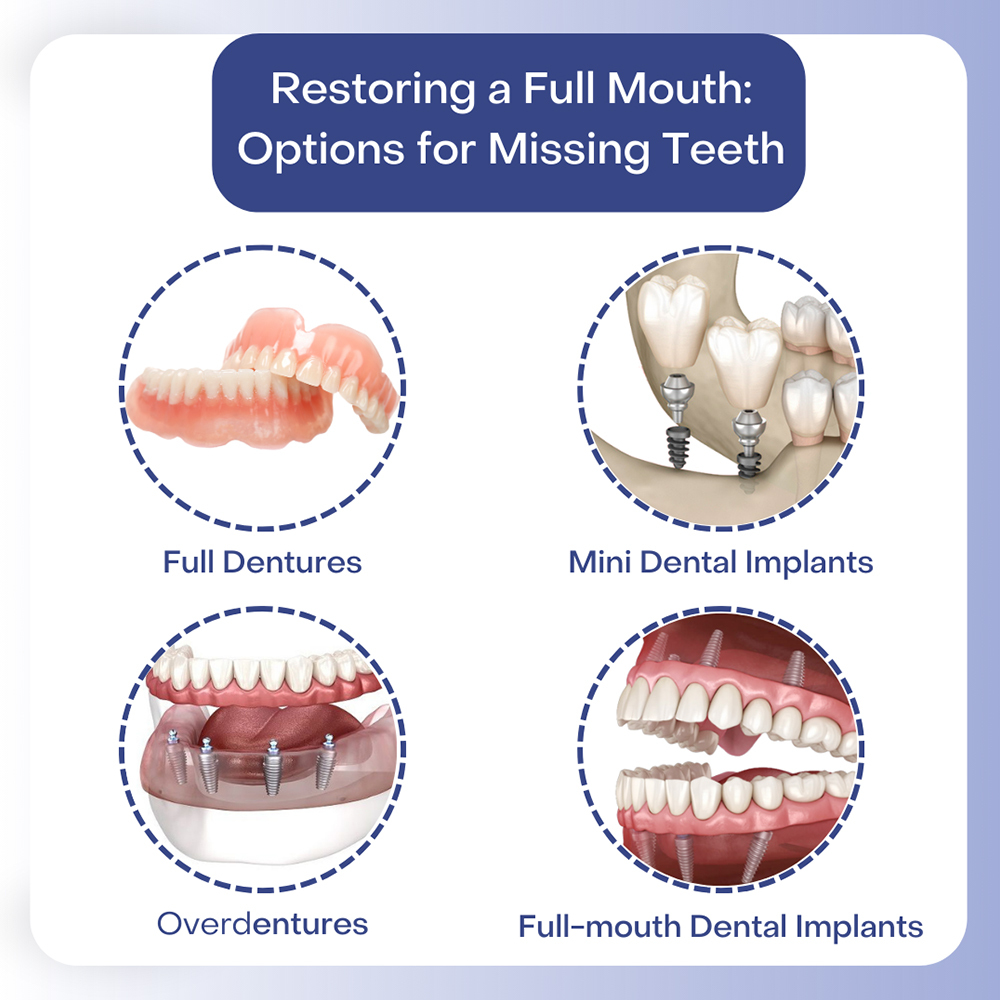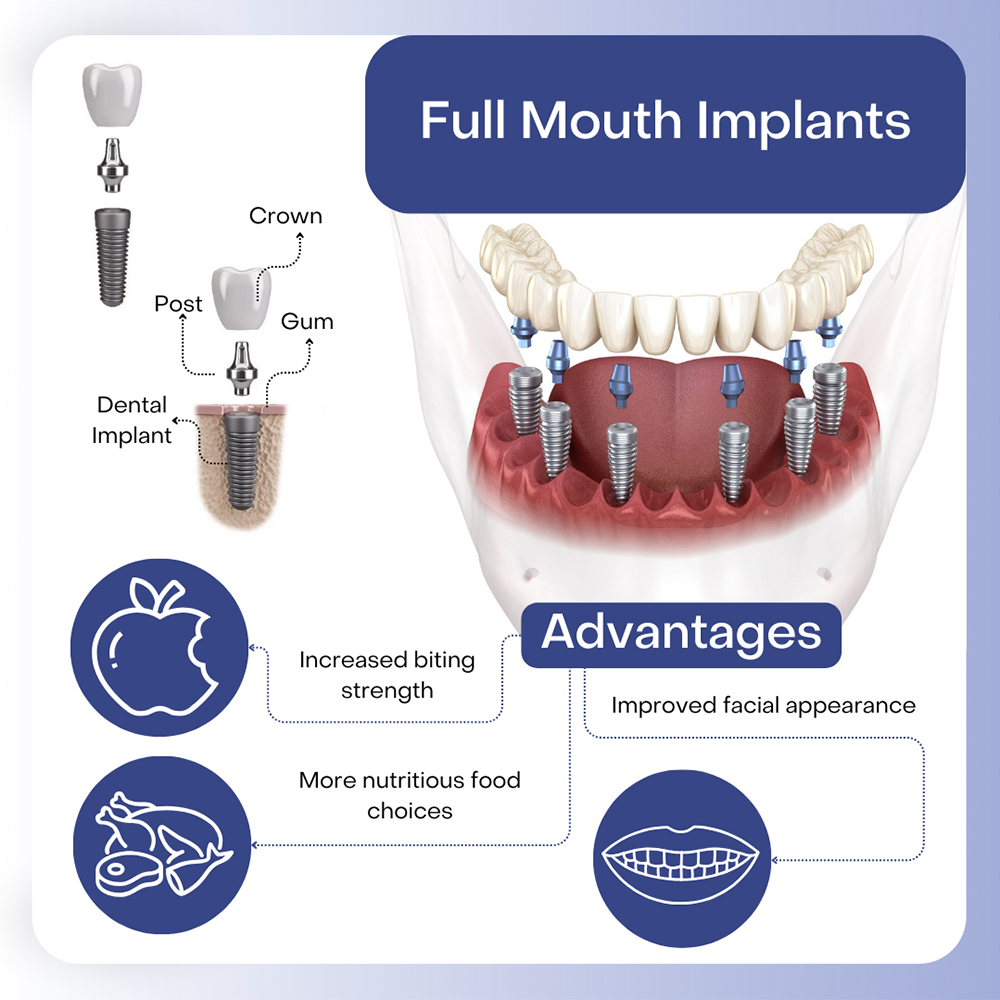What Does Dental Sense Do?
What Does Dental Sense Do?
Blog Article
Excitement About Dental Sense
Table of ContentsThe Buzz on Dental Sense4 Easy Facts About Dental Sense DescribedThe smart Trick of Dental Sense That Nobody is Talking AboutAll about Dental Sense
are medical tools operatively dental implanted into the jaw to recover a person's capability to eat or their look. They offer support for fabricated (fake) teeth, such as crowns, bridges, or dentures. When a tooth is lost because of injury or illness, a person can experience problems such as quick bone loss, faulty speech, or changes to eating patterns that cause pain.Oral dental implant systems consist of an oral implant body and oral implant joint and may additionally include an abutment fixation screw. Professional teeth whitening. The dental implant body is surgically put in the jawbone instead of the tooth's root. The dental implant joint is normally connected to the implant body by the joint addiction screw and extends with periodontals into the mouth to sustain the attached fabricated teeth
(https://www.openlearning.com/u/matthewmusic-spvoez/about/)Structure of The Oral Implant System choosing oral implants, speak with your dental copyright concerning the possible benefits and risks, and whether you are a candidate for the procedure. Things to think about: Your overall health is an essential factor in establishing whether you are a good prospect for dental implants, for how long it will certainly require to recover, and just how long the implant may remain in place.
Cigarette smoking may impact the healing process and decrease the long-term success of the dental implant. The recovery process for the implant body may take a number of months or longer, throughout which time you usually have a momentary joint in place of the tooth. the oral implant treatment: Very carefully follow the dental health instructions offered to you by your oral copyright.
Dental Sense Can Be Fun For Anyone
Implant failing can lead to the requirement for an additional surgery to take care of or replace the implant system. Recovers the capability to eat Brings back cosmetic look Helps maintain the jawbone from shrinking because of bone loss Protects the wellness of the surrounding bone and gums Aids keep nearby (neighboring) teeth stable Enhances lifestyle Damage to surrounding all-natural teeth during implant positioning Injury to the surrounding cells during surgical treatment, such as sinus perforation Injury during surgery (for instance, fracture of surrounding jawbone) Poor feature, such as seeming like the teeth do not attack with each other usually An experience that the tooth hangs or turning in location arising from a joint screw loosening Implant body failure (looseness of the dental implant body) as a result of systemic infection, which may be more probable in people with unchecked diabetes as a result of local infection in bone and gums sustaining the dental implant body as a result of postponed recovery, which may be most likely in patients that smoke Trouble cleansing the gum tissues around the implant, resulting in poor dental hygiene Untreated gum condition Post-surgical tingling because of nerve impingement or damages Always inform healthcare companies and imaging technicians that you have dental implants before any type of magnetic vibration imaging (MRI) or x-ray treatments.
FDA is not knowledgeable about any negative occasions reported for MRI or x-ray treatments with dental implants. Oral implants systems are generally made of materials that follow international agreement criteria of the International Company for Standardization (ISO) or ASTM International. These criteria have information of what makes a secure product.

An oral implant is a framework that replaces a missing out on tooth. With screw-like tools, the specialist inserts an implant into the jawbone, and it acts as a support for a man-made tooth, called a crown.
The Main Principles Of Dental Sense
Some individuals are not qualified for dental implant surgical treatment. It is for dental cosmetic surgeons to operate individuals with: intense illnessuncontrollable metabolic diseasebone or soft tissue disease or infectionIf these concerns are resolved, a person can have the surgery. In, dental cosmetic surgeons avoid running on people with: If people with any one of the above go through oral implant surgical procedure, there is a greater danger of the implant failing.

Dental dental implant surgery is a customized procedure. It's not the very same for everyone. The complying with gives a basic summary of what you can anticipate your dental professional, dental specialist, periodontist or prosthodontist to do: Position the implant operatively. Provide you time to heal. Affix the article and final crown, bridge or denture.
Next, your cosmetic surgeon will thoroughly place the dental implant right into your jaw. If your implant is near the front of your mouth, your dental expert will make a short-term tooth for you to put on until you heal.
10 Simple Techniques For Dental Sense
Your provider can inform you what to anticipate in your circumstance. During the healing phase, your jawbone should fuse to the oral implant. This process, called osseointegration, is crucial for stability and long-lasting success. This process can take anywhere from this contact form 3 to 9 months. In some cases, it may take much longer.
Once your dental implant heals, your dental professional can affix the abutment (little adapter blog post) and your last remediation (crown, bridge or denture). This typically takes about one hour to finish and might need a 2nd small surgical treatment. You should not feel any discomfort during your oral implant procedure due to the fact that your provider will certainly make use of medication to numb your gums.
Report this page